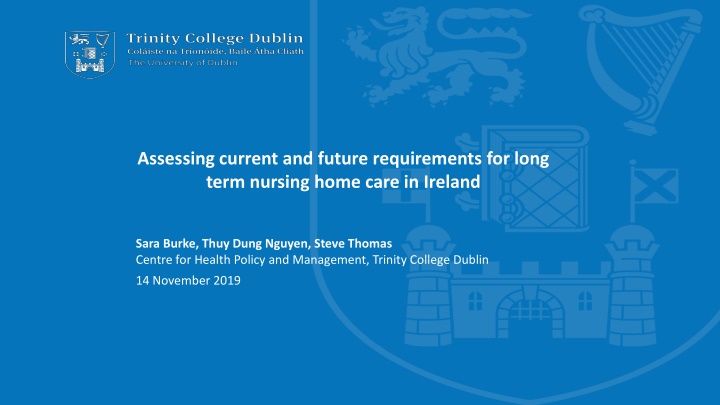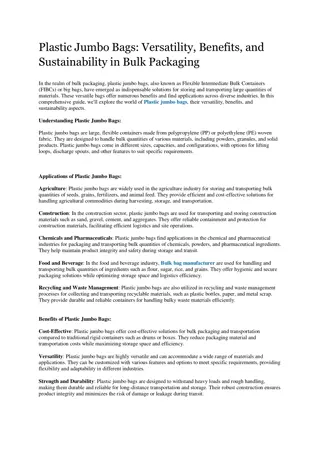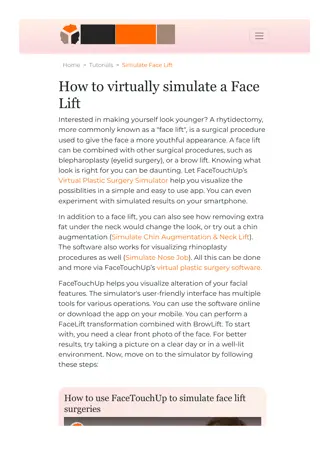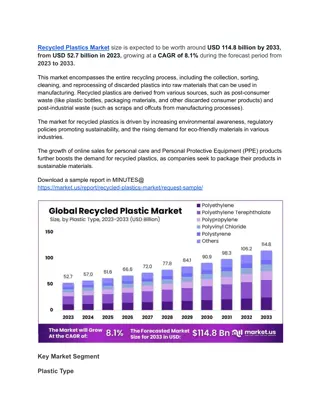Reduce Plastic Challenge 2020-2022
Create something reusable from plastic items like bags and bottles to participate in the Reduce Plastic Challenge 2020-2022. Collect points based on the amount of plastic utilized and submit your project by the reporting deadline. Winners will receive certificates for their innovative creations that promote environmental sustainability. Take action today to make a difference and contribute to a cleaner, greener future.
Download Presentation

Please find below an Image/Link to download the presentation.
The content on the website is provided AS IS for your information and personal use only. It may not be sold, licensed, or shared on other websites without obtaining consent from the author.If you encounter any issues during the download, it is possible that the publisher has removed the file from their server.
You are allowed to download the files provided on this website for personal or commercial use, subject to the condition that they are used lawfully. All files are the property of their respective owners.
The content on the website is provided AS IS for your information and personal use only. It may not be sold, licensed, or shared on other websites without obtaining consent from the author.
E N D
Presentation Transcript
Assessing current and future requirements for long term nursing home care in Ireland Sara Burke, Thuy Dung Nguyen, Steve Thomas Centre for Health Policy and Management, Trinity College Dublin 14 November 2019
Presentation outline I. Rationale of the study Irish ageing population Previous projections of long-term nursing home requirements in Ireland Current trends in Nursing Home Support Scheme (NHSS Fair Deal) II. Study design and results Factors affecting nursing home requirements Data sources, methodology and scenarios National projections Community Healthcare Organisations (CHO) level projections III. What does this research mean for the Irish health system & for nursing home providers? Trinity College Dublin, The University of Dublin
Rationale of the study Population projections of numbers of older people from 2011 to 2031 1200000 1000000 800000 600000 400000 200000 0 Number of people aged 65 and older Number of people aged 80 and older Trinity College Dublin, The University of Dublin
Rationale of the study Previous projections for long term nursing home requirements Year Long-term nursing home care Wren (2009) ESRI 2021 35,824 Wren et al. (2017) - ESRI 2030 30,118 33,000 places PA Consulting Group (2018) 2031 36,700 beds NHSS review (2015) 2018 25,086 Figures off by 2,000 Trinity College Dublin, The University of Dublin
Rationale of the study Number of NHSS funded long term nursing home residents and utilisation rates 2011-2018 22500 3.70% 22000 3.60% 21500 21000 3.50% Number of residents 20500 3.40% Percent 20000 19500 3.30% 19000 3.20% 18500 18000 3.10% 17500 17000 3.00% 2011 2012 2013 2014 2015 2016 2017 2018 Nursing home residents aged 65 and older Utilisation rates Trinity College Dublin, The University of Dublin
Study design Numbers of long - term nursing home residents by age groups 7000 6000 5000 4000 3000 2000 1000 0 2011 2012 2013 2014 2015 2016 2017 2018 65-69 years 70-74 years 75-79 years 80-84 years 85-89 years 90 and over Trinity College Dublin, The University of Dublin
Study design Numbers of long-term nursing home residents by gender 25000 20000 15000 10000 5000 0 2011 2012 2013 2014 2015 2016 2017 2018 Male Female Trinity College Dublin, The University of Dublin
Study design Disability trends in older people aged 85 and over 2010 - 2017 Males Females 50.0 50.0 40.0 40.0 30.0 30.0 20.0 20.0 European Union - 28 countries Ireland Linear (European Union - 28 countries) 10.0 10.0 0.0 0.0 2010 2011 2012 2013 2014 2015 2016 2017 2010 2011 2012 2013 2014 2015 2016 2017 Trinity College Dublin, The University of Dublin
Study design Data sources: Disability rates: Census 2011, Census 2016 by CSO Population projections 2019-2031 based on 2016 by CSO Numbers of nursing home residents at national and at Community Health Organisation (CHO) level in Long-Stay Activity Statistic reports 2011-2017 Number of nursing home residents at national and at CHO level in 2018 was requested from HSE Model: Long term nursing home requirements were created under three scenarios, based on various assumptions of change in historic disability and nursing home utilisation trends. Trinity College Dublin, The University of Dublin
Study design Scenario 1 - Population growth scenario Considering the demographic factor in the period 2019-2031. Scenario 2 - Healthy ageing scenario Considering the decline in disability rates amongst older people. Scenario 3 - Healthy ageing scenario adjusted for nursing home utilisation trend Including Scenario 2 s assumption and the relationship between utilisation and need in the period 2011 and 2018. Trinity College Dublin, The University of Dublin
Projection results National projection of long-term nursing home residents aged 65 and over 2019 2031 40000 38000 36000 34000 32000 30000 28000 26000 24000 22000 20000 2019 2020 2021 2022 2023 2024 2025 2026 2027 2028 2029 2030 2031 Scenario 1 Scenario 2 Scenario 3 Trinity College Dublin, The University of Dublin
Projection results Projected utilisation rates of long-term nursing home among older people aged 65 and over 2019-2031 4.00% 3.80% 3.60% 3.40% 3.20% 3.00% 2.80% 2.60% 2.40% 2.20% 2.00% 2019 2020 2021 2022 2023 2024 2025 2026 2027 2028 2029 2030 2031 Scenario 1 Scenario 2 Scenario 3 Trinity College Dublin, The University of Dublin
Projection results Projected long-term nursing home residents aged 65 and over per CHO area 2019 2031 2020 2025 2030 Area 1 1959 2234 2575 Area 2 2647 3022 3488 Area 3 1976 2253 2591 Area 4 3658 4169 4799 Area 5 2480 2822 3244 Area 6 1989 2264 2608 Area 7 2845 3239 3722 Area 8 2630 3000 3456 Area 9 2538 2894 3328 Trinity College Dublin, The University of Dublin
What do our findings tell us? Most previous projections over estimated requirements for long term nursing home care for over 65 year olds Nursing home utilisation is not in line with ageing demographic Health system factors matter Direct relationship btw nos on waiting list & NH nos Co-ordinated, integrated care reduces NH Home support only good data rom 2018 Short stay & transitional beds NHSS financial incentives matter: people, NH, public HIQA - 2021 Housing & informal care/support matter Trinity College Dublin, The University of Dublin
What does the research mean for nursing home providers? There will be an increased requirement for nursing home care but not as high as most previous projections People O 65 who will need nursing home care will be the older old with v/high dependency Plans to replace/increase public NH beds may only replace existing beds Average Length of Stay (ALOS) will decrease Utilise better data to inform direction of NH Increase need for care across the continuum as health system reform & housing policy are implemented Trinity College Dublin, The University of Dublin
What do the projections mean for the health system? Numbers is nursing home can clearly be moderated and reduced by effective public policy measures If Sl intecare is implemented well right care, right place, right time significantly fewer people should require nursing home care Roll out of Regional Integrated Care Areas, prevention, early intervention, homecare, entitlements, access to primary & specialist care, timely access to acute care.. Monitoring progress will be key Our projections debunk the demographic time bomb, most older people age healthily Trinity College Dublin, The University of Dublin























